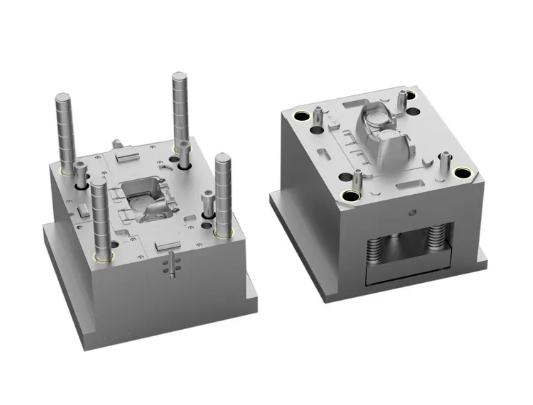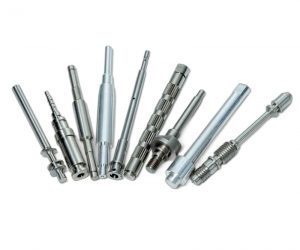Stamping parts on automobile body are generally divided into covering parts, beam frame parts and general stamping parts. The stamping part that can clearly represent the image characteristics of the automobile is the automobile panel. Therefore, the automobile die referred to by GATT can be said to be "automobile panel stamping die". It is called automobile panel die for short. For example, trimming die for front door outer panel, punching die for front door inner panel, etc.
Of course, there are not only stamping parts on the car body. The die of all stamping parts on the automobile is called "automobile stamping die". To sum up:
- Automobile mould is the general name of mould for manufacturing all parts of automobile.
- Automobile stamping die is a die for stamping all stamping parts on the automobile.
- Automobile body stamping die is a die for stamping all stamping parts on automobile body.
- Automobile panel stamping die is a die for stamping all panels on automobile body.
Now when we talk about automobile die in this section, it seems that we all refer to automobile panel die. In order not to be confused with the automobile die in a broad sense, it is better to use the automobile panel die instead of the automobile die when posting.
Automobile molds are crucial in the production of automotive parts and components, significantly influencing the quality and performance of the final products. These molds undergo precise processing technologies to meet the stringent demands of the automotive industry. In this article, we will delve into the processing technologies and characteristics of automobile molds.
Processing Technology of Automobile Molds
- Usinado CNC: Computer Numerical Control (CNC) machining is widely used for its precision and consistency. It allows for complex shapes and high tolerances, which are essential for automotive molds.
- EDM (Electrical Discharge Machining): EDM, especially wire EDM, is employed for creating intricate details and hard-to-reach areas. It uses electrical discharges to erode material, leaving a smooth finish.
- Moldeo por inyección: This process involves injecting molten plastic into a mold cavity. It’s commonly used for producing large quantities of parts with consistent quality and low cost.
- Die Casting: A method that forces molten metal under high pressure into a mold cavity, die casting is ideal for producing complex shapes with excellent surface finishes.
- Laser Cutting: Laser technology provides high precision and speed, making it suitable for cutting and engraving mold components with fine details.
- Grinding and Polishing: These finishing processes ensure that the mold surfaces are smooth and free from defects, critical for producing high-quality automotive parts.
Characteristics of Automobile Molds
- Durability: Automobile molds must withstand high pressures and temperatures during the manufacturing process. They are typically made from durable materials like tool steel or carbide to ensure longevity.
- Precision: The tolerances in automotive molds are extremely tight to ensure that the parts fit perfectly within the vehicle. Any deviation can lead to part failure or poor performance.
- Complexity: Modern automotive designs require molds that can produce complex geometries, including undercuts, variable wall thicknesses, and intricate details.
- High Volume Production Capability: The automotive industry often requires mass production of parts. Molds must be designed to produce thousands or even millions of parts without degradation in quality.
- Rapid Prototyping Compatibility: With advancements in rapid prototyping technologies, molds are also being designed to accommodate quick iterations and modifications, allowing for faster development cycles.
Importance of Quality Control
Quality control is paramount in the production of automobile molds. Rigorous testing and inspection at every stage of the manufacturing process help ensure that the molds meet the required specifications. Techniques such as coordinate measuring machines (CMMs), computer vision systems, and X-ray inspection are employed to verify dimensions, surface finish, and material integrity.
The processing technology and characteristics of automobile molds are critical in determining the quality and performance of automotive parts and components. Advanced manufacturing techniques, precision engineering, and rigorous quality control ensure that these molds meet the demanding standards of the automotive industry. By understanding and implementing these technologies and characteristics, manufacturers can produce high-quality molds that contribute to the overall excellence of automotive products.
Automobile molds are typically made from high-quality, durable materials such as steel, aluminum, or titanium. The choice of material depends on the specific application and requirements of the mold. For example, molds that are subjected to high temperatures and pressures require materials with high strength and heat resistance.
The processing technology used in the production of automobile molds is highly specialized and requires skilled personnel with extensive experience in mold design, manufacturing, and assembly. The process involves several stages, including design, material selection, machining, heat treatment, assembly, and testing.
One of the key characteristics of automobile molds is their precision and accuracy. The molds must be manufactured to extremely tight tolerances to ensure that the final product meets the required specifications and quality standards. This requires the use of advanced equipment and tools, such as CNC machines, EDM machines, and high-precision measuring instruments.
Another characteristic of automobile molds is their durability and resistance to wear and tear. The molds are subjected to high pressures, temperatures, and stresses during the manufacturing process, which can cause wear and deformation. To ensure the longevity and reliability of the molds, manufacturers use specialized heat treatment processes, such as quenching and tempering, to improve their strength and hardness.
Automobile molds also feature complex geometries and designs. The molds are designed to produce automotive parts with intricate shapes and features, such as curves, corners, and angles. To achieve these complex geometries, manufacturers use advanced CAD/CAM software and specialized machining processes, such as high-speed milling and wire EDM.
the processing technology and characteristics of automobile molds are critical factors in determining the quality and performance of the final product. The molds must be manufactured to extremely tight tolerances and feature high strength, durability, and resistance to wear and tear. By utilizing advanced equipment, tools, and processes, manufacturers can produce high-quality automobile molds that meet the unique needs and specifications of their customers.

